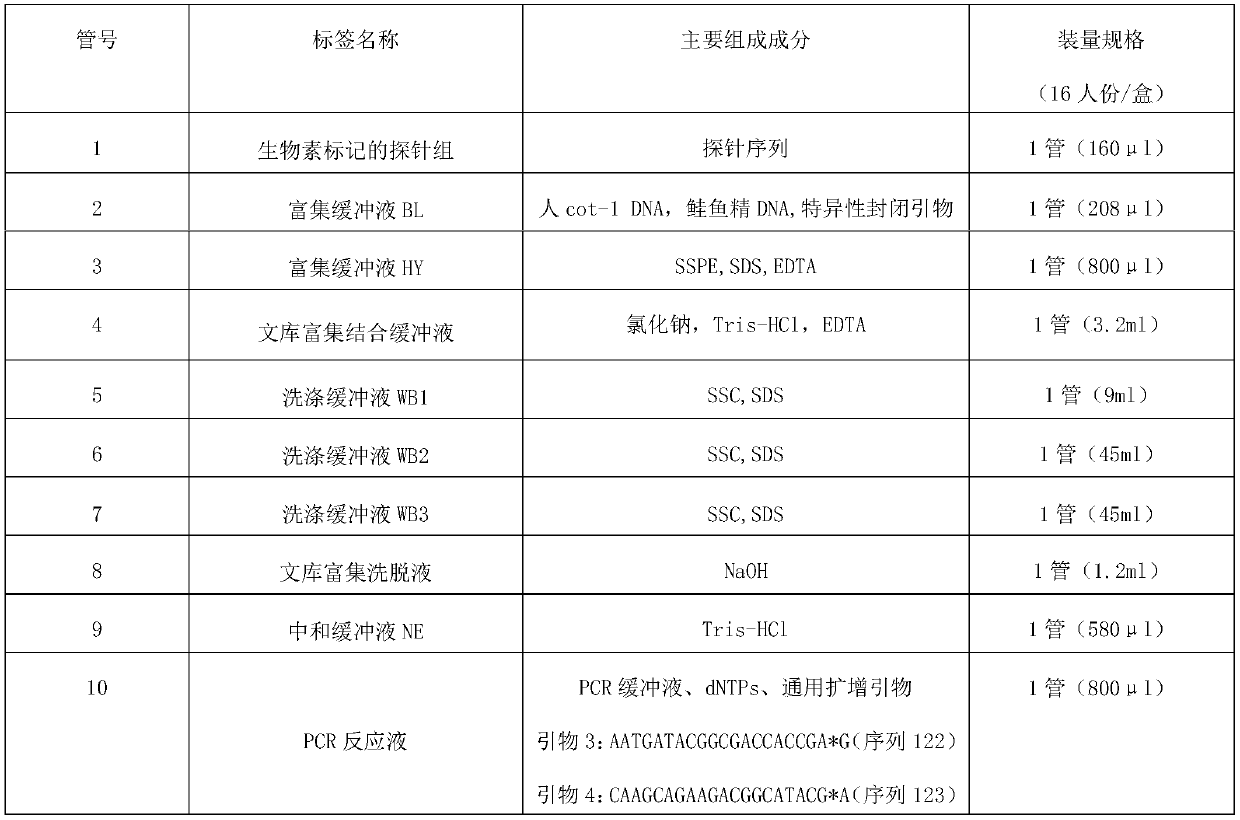Deafness-related gene capture kit and application thereof
A technology of gene capture and kit, which is applied in the direction of DNA/RNA fragments, microbial determination/inspection, recombinant DNA technology, etc., and can solve the problems of few detection sites, expensive results, instability, etc.
- Summary
- Abstract
- Description
- Claims
- Application Information
AI Technical Summary
Problems solved by technology
Method used
Image
Examples
Embodiment 1
[0051] Example 1. Preparation of deafness-related gene capture kit and special probes thereof
[0052] 1. Design and preparation of deafness-related gene capture probes
[0053] According to the whole exon sequence of deafness-related genes, a 120bp probe sequence was designed for the non-repeated region in each region, and each sequence was designed by moving along the gene position. Using in situ synthesis technology, a large number of designed probes were synthesized.
[0054] A large amount of biotin-labeled probes were amplified by PCR, and the specific method was as follows:
[0055] The probe synthesized above was dissolved in a total volume of 1.2ml of ddH 2 In O, take 5 μl of it as a DNA template, use general-purpose PCR primers (the sequence at the 5' end is GACTACATGGGACAT, and the sequence at the 3' end is GGAACCTACGACGTA), and divide into three tubes for PCR amplification, wherein the primer GACTACATGGGACAT is a primer labeled with biotin (Sequence 114, Sequenc...
Embodiment 2
[0129] Embodiment 2, the application of kit
[0130] The present invention will be described in further detail below through specific embodiments
[0131] 1. Kit capture detection of a deafness-related gene
PUM
 Login to View More
Login to View More Abstract
Description
Claims
Application Information
 Login to View More
Login to View More - R&D
- Intellectual Property
- Life Sciences
- Materials
- Tech Scout
- Unparalleled Data Quality
- Higher Quality Content
- 60% Fewer Hallucinations
Browse by: Latest US Patents, China's latest patents, Technical Efficacy Thesaurus, Application Domain, Technology Topic, Popular Technical Reports.
© 2025 PatSnap. All rights reserved.Legal|Privacy policy|Modern Slavery Act Transparency Statement|Sitemap|About US| Contact US: help@patsnap.com



